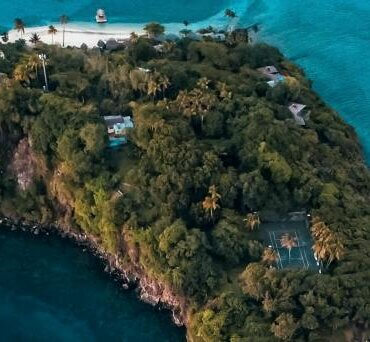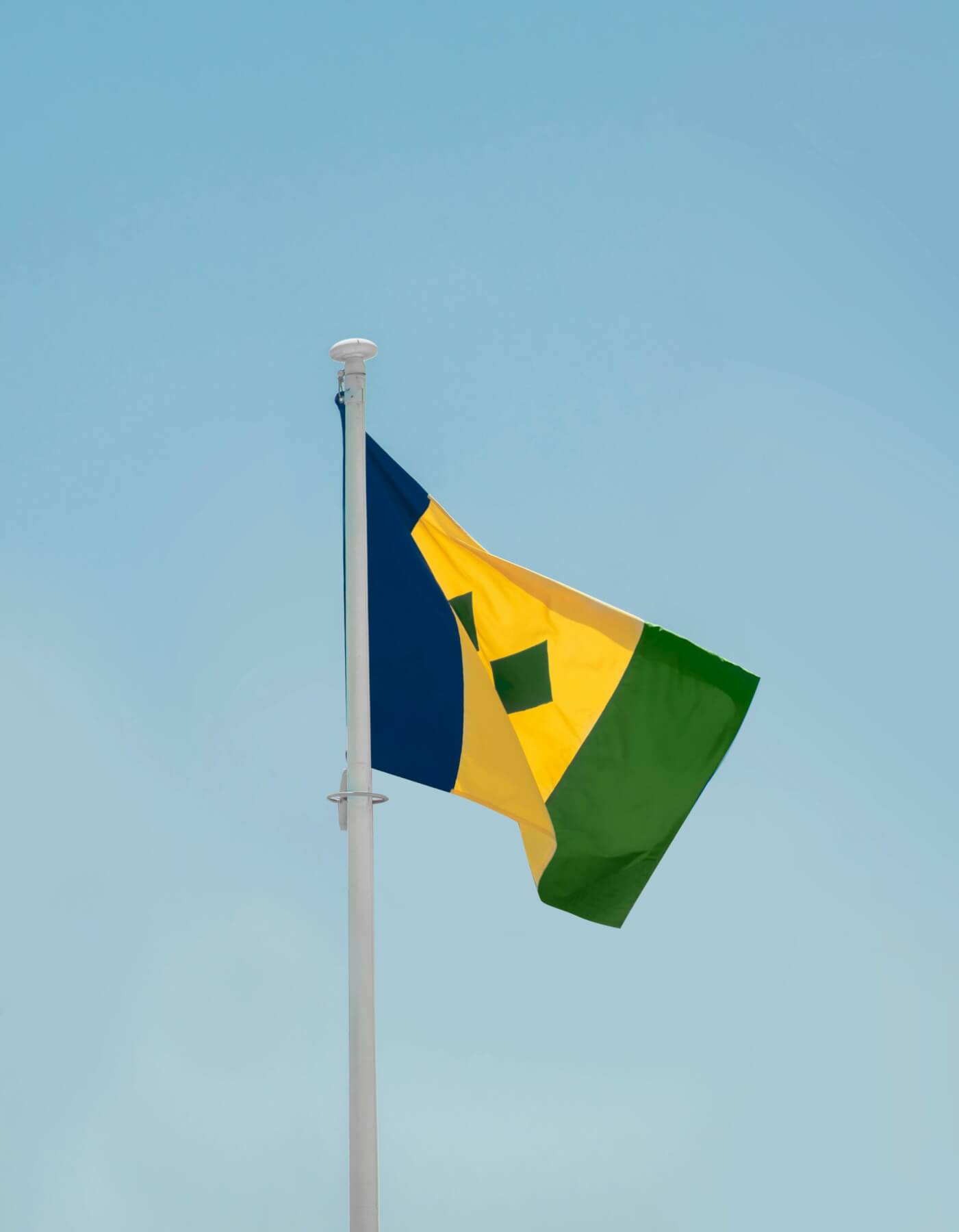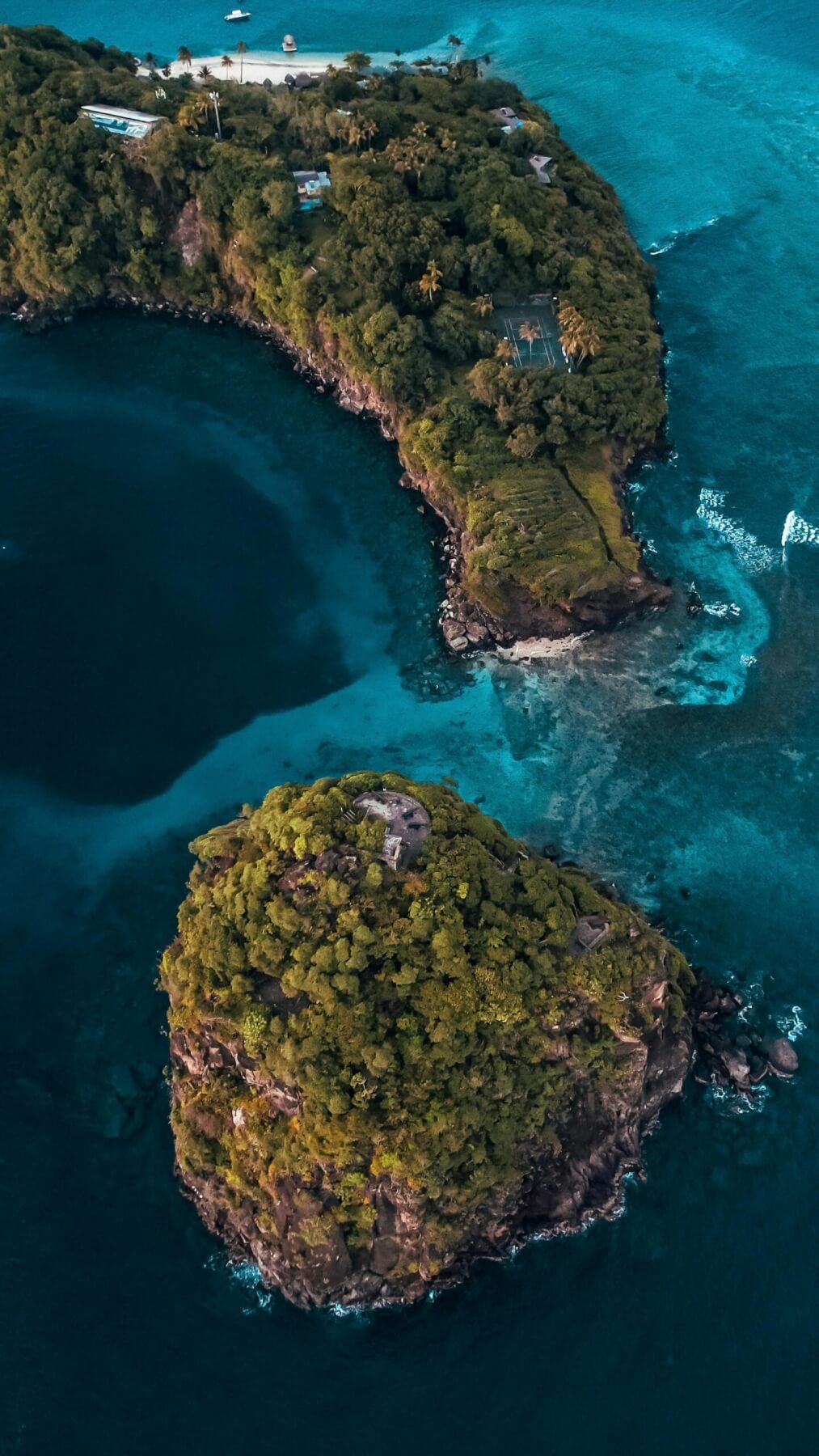
St Vincent and the Grenadines
I often say that part of a volcanologist’s job is to understand not just the obvious scenarios when a volcano stirs, but also the less predictable ones. Here’s a powerful example of how things can take an unexpected turn.

Flag of Saint Vincent and the Grenadines on the Background of Blue Sky. Photo: Aboodi Vesakaran,pexels.com
In late 2020—amidst a world full of distractions—you might have missed the eruption of La Soufrière, a volcano on the island nation of Saint Vincent and the Grenadines in the Caribbean. This wasn’t an unknown volcano. Documented eruptions stretch back to 1718, with the most recent activity in 1979, so it was on the radar of the volcanology community.
On 27 December 2020, a new lava dome was spotted right beside the old one. A lava dome forms when near-solid lava squeezes out at the surface and grows into a large mound of hot, and potentially very dangerous rock. While active, the dome can be incredibly hot and unstable. Generally, this is not a good place to be.
This kind of activity, where lava steadily squeezes out like toothpaste from a tube, is known as an effusive eruption. There’s little to no explosive activity in this phase — no volcanic ash, no flying rock — at least, not yet.
Over the following months the lava dome continued to grow. By 19 March the dome was 105m tall, 921m long, and 243m wide. To put that in perspective, the Beehive in Wellington is 72m high and about nine times the length of a rugby field. An impressive structure so far!
Then, on 21 March, local volcanologists detected a shift. Changes in the pattern of seismicity hinted that more magma might be rising—a warning that something was changing beneath the surface.
By 5 April the seismicity was ramping up.
Just three days later, steam and gas were observed visibly venting from the top of the dome. The alert level was raised to Red, and evacuations began. The eruption was about to shift from slow and steady to something far more dangerous.
On 9 April the eruption turned explosive, with the magma violently fragmenting into ash that towered high above the vent. This new phase saw volcanic ash significantly impacting St. Vincent as well as Barbados to the east.
Over the following days, ash plumes reached up to 16km altitude as well as pyroclastic flows–fast and hot avalanches of gas and rock. The ash drifted around 3000km east, disrupting air traffic across the region. The weight of the ash caused some roofs to collapse in St. Vincent.
By 11 April, widespread power and water outages were affecting the island—compounding the challenges of an already difficult pandemic year.
Intermittent ash plumes and pyroclastic flows continued until the end of the eruption on 22 April.
In total, approximately 22,000 people were evacuated, 88 shelters were activated, and the cleanup cost more than $NZ17.8 million.
This eruption started out quietly—gently, even—and remained that way for months. That long, calm period can lead to a false sense of security. But this example shows just how quickly a volcano’s behaviour can shift. What begins as an effusive eruption can evolve into something far more hazardous.










